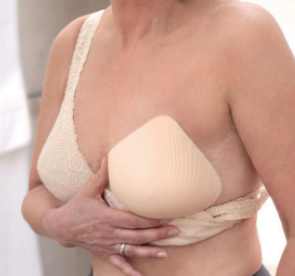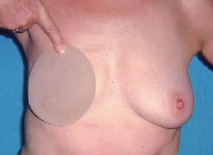Oncoplastic and Reconstructive Surgery
Breast Cancer and Breast Reconstructive Surgery
By Dr Teoh Mei Shi (Consultant Breast Surgeon) & Dr Wong Thai Er (Consultant Plastic and Reconstructive Surgeon)
Introduction
Over the last few decades, surgical treatment of breast cancer has undergone a paradigm shift from radical mastectomy that involves removal of whole breast and large portion of muscle underlying the breast tissue to breast conserving surgery and now oncoplastic breast reconstructive surgery. Concomitant advances in chemotherapy and radiotherapy treatment have played a major role in this shift.
The objective of oncoplastic breast reconstructive surgery is to rebuild or reshape the breast to an aesthetically pleasing final outcome after oncological removal of breast cancer.

The combined reconstructive surgery can be carried out immediately at the time of breast cancer surgery or as a delayed procedure performed months or years later. The practice of immediate breast reconstruction results in single hospitalization stay therby saving time and cost with shorter time away from work. Moreover, immediate breast reconstruction certainly helps one to regain confidence with a positive outlook.
Choice of Oncoplastic Breast Reconstructive Surgery will depend on
- stage and subtypes of breast cancer
- breast size and volume
- adequate autologous tissue for reconstruction
- patient’s choice and expectation
- location of the breast tumor
- tumor response to neoadjuvant treatment
Types of Oncoplastic Breast Surgery
- Breast conserving surgery (Lumpectomy) - with volume replacement and volume displacement techniques
- Nipple-sparing mastectomy (NSM) / Skin-sparing mastectomy (SSM) * - with autologous tissue reconstruction eg * Back tissue (LD Flap), Tummy tissue (TRAM Flap)
- Implant reconstruction *
There are many options for breast reconstruction following surgery for breast tumour. As such, these options have to be discussed with the patients and the most appropriate option is then chosen and tailored for them. Many factors need to be taken into consideration during the discussion as these factors would affect not only the outcome of the reconstruction, but also the adjuvant therapies (radiotherapy and chemotherapy).
Multidisciplinary discussion between patient, oncologist, breast surgeon and reconstructive surgeon is pertinent to decide the best approach for each patient for appropriate oncological treatment for breast cancer followed by appropriate breast reconstruction.
Methods of breast reconstruction available are
- External breast prosthesis
- Implant reconstruction
- Autologous tissue flap reconstruction
- TRAM Flap
- LD Flap

External Breast Prosthesis

Breast Implant

Lattisimus Dorsi Flap Reconstruction

Tranverse Rectus Abdominis Muscle Flap Reconstruction
CONCLUSION
Breast cancer patients are now enjoying a longer lifespan due to better understanding of tumour biology with more advanced treatment options. By removal of the breast tumour coupled with choice of breast reconstruction, we aspire the survivors not only will enjoy a longer and better quality of life, but also live with restored confidence and esteem in their ongoing and future endeavours.
Recommended reading list
https://www.cancer.org.au/content/about_cancer/ebooks/aftercancer/Breast%20Prostheses%20&%20reconstruction_booklet_July%202014.pdf

< Back to Breast Cancer Treatment : Surgery & Reconstructive Surgery
